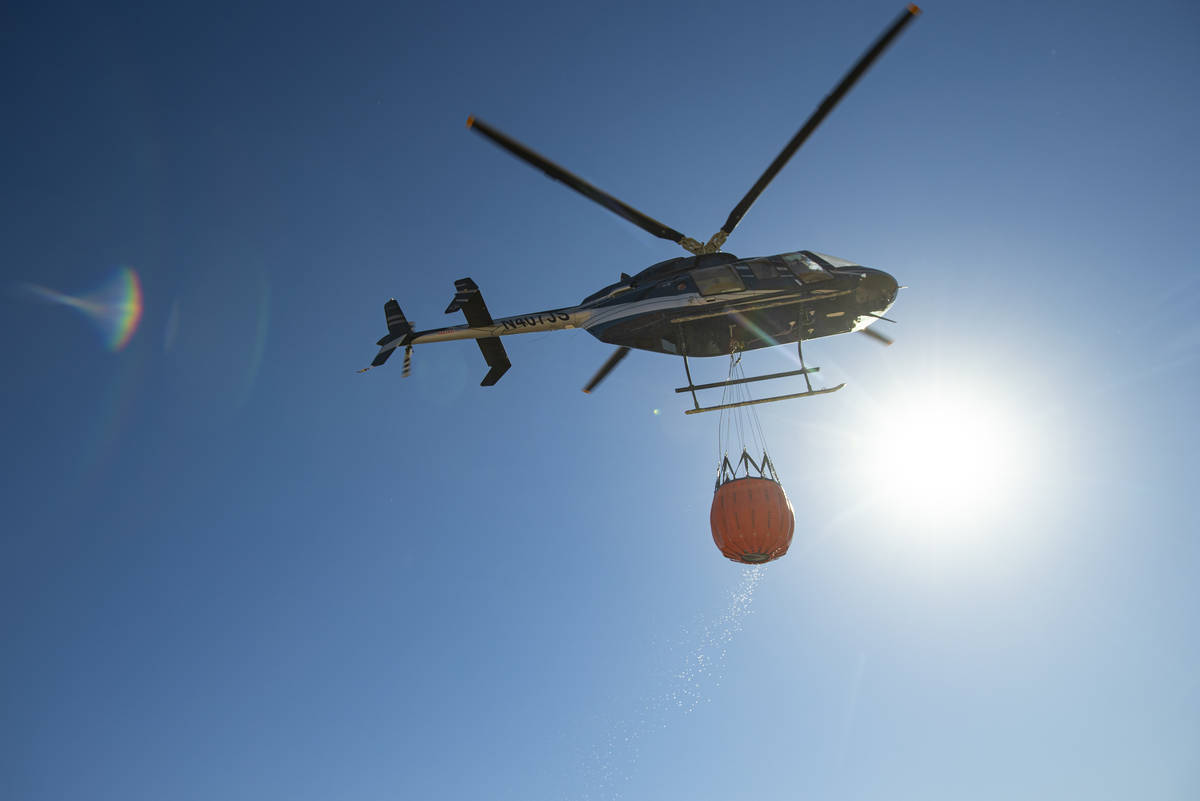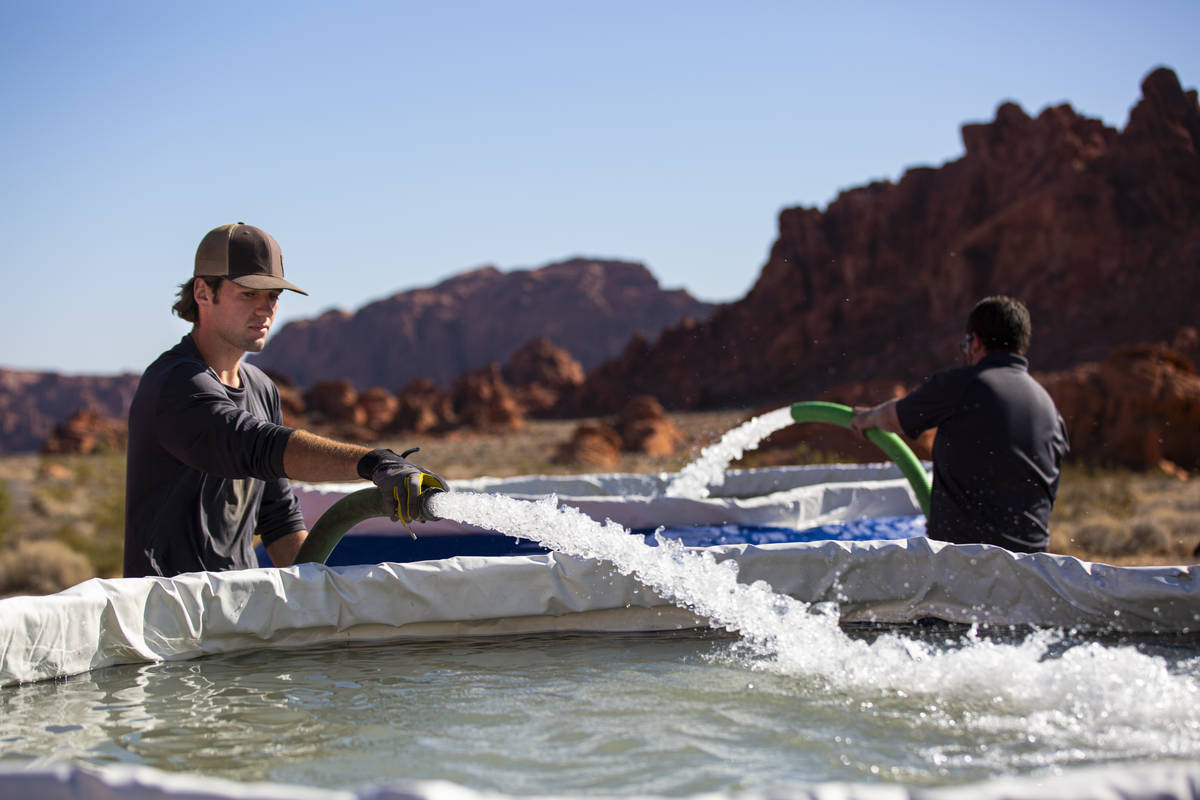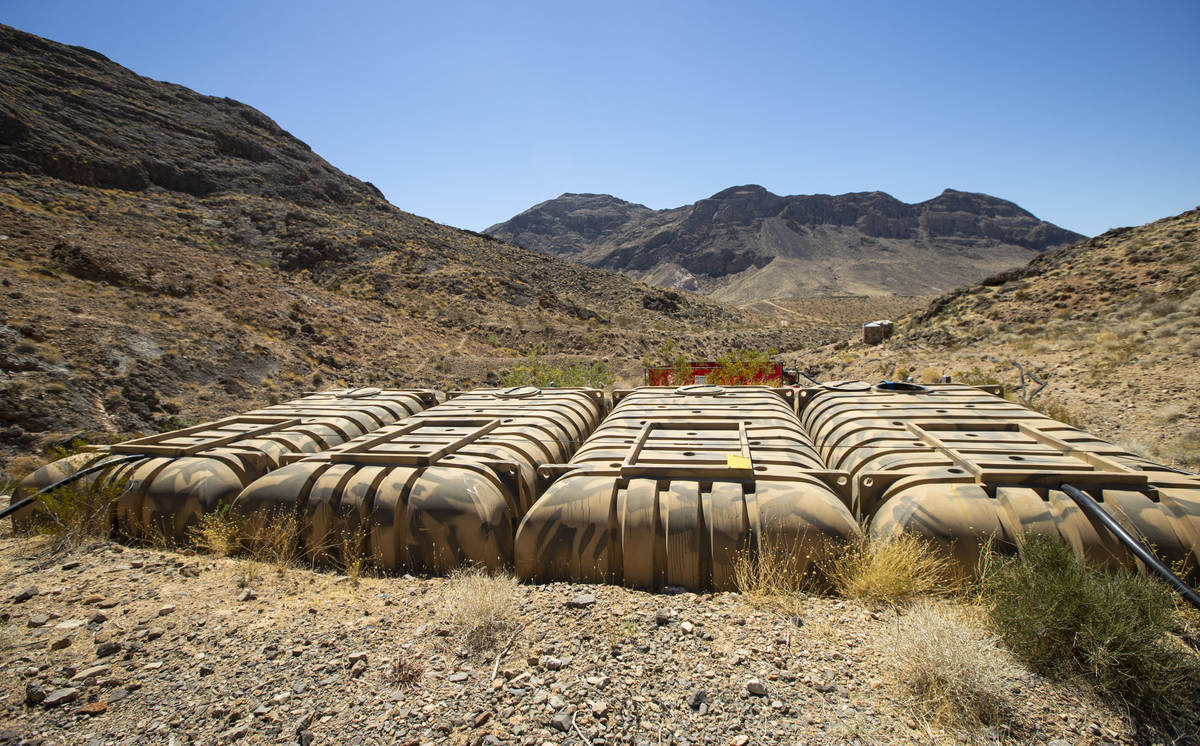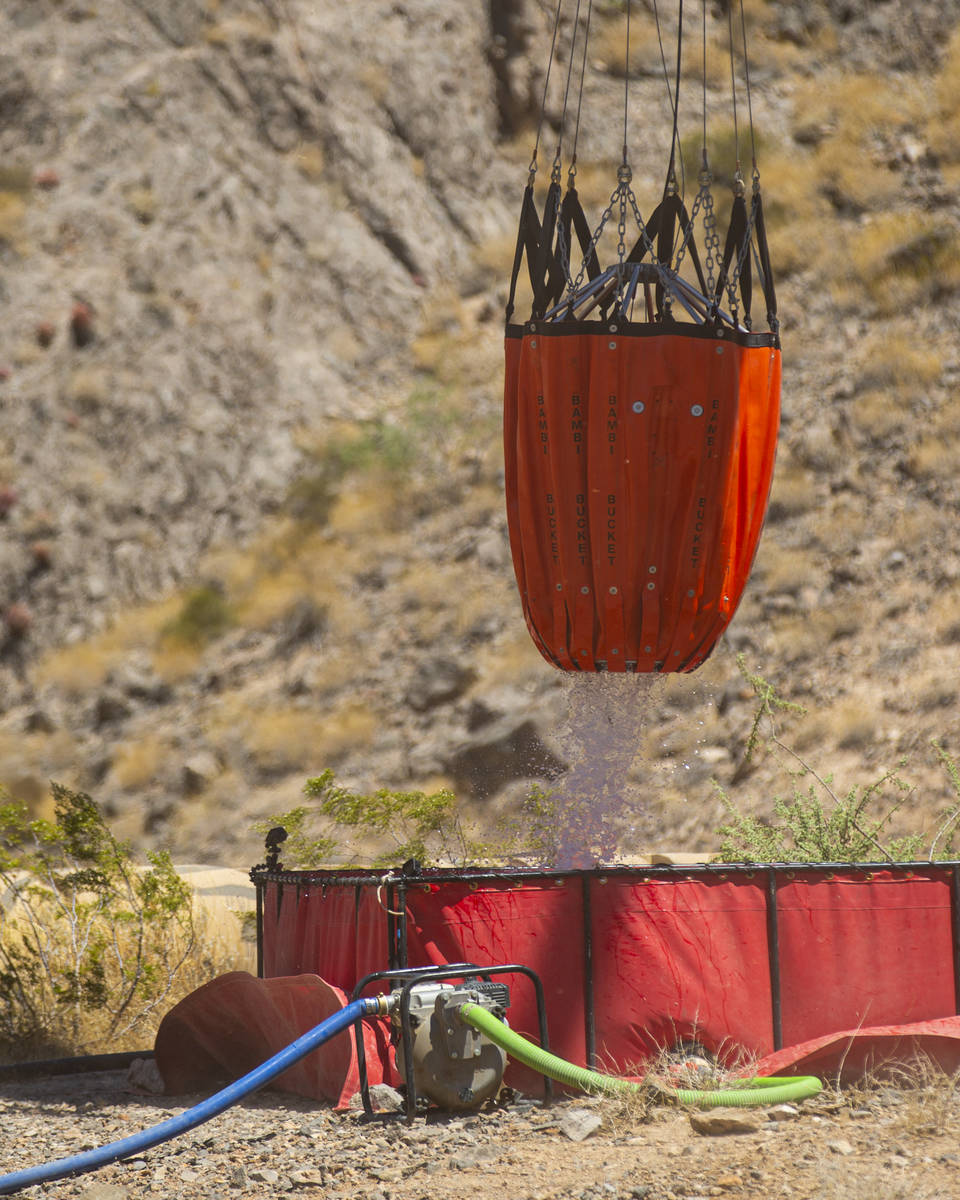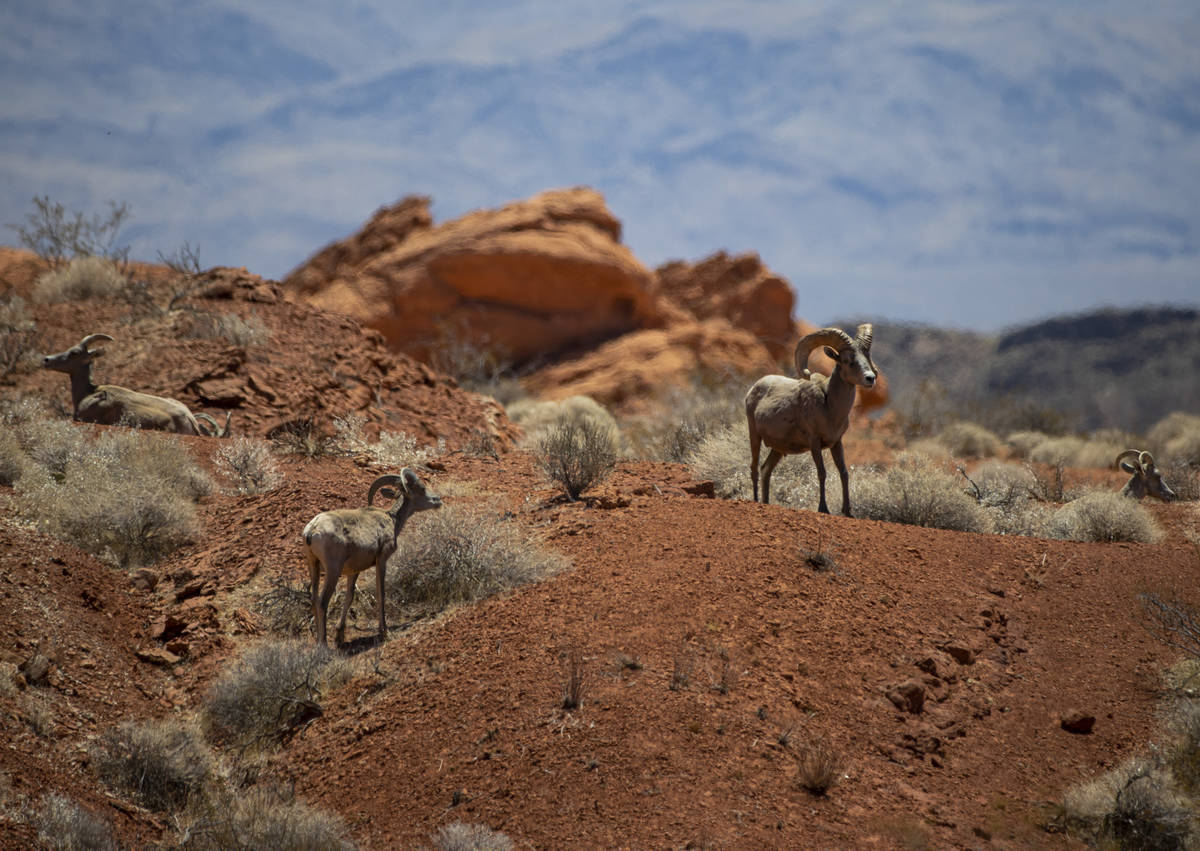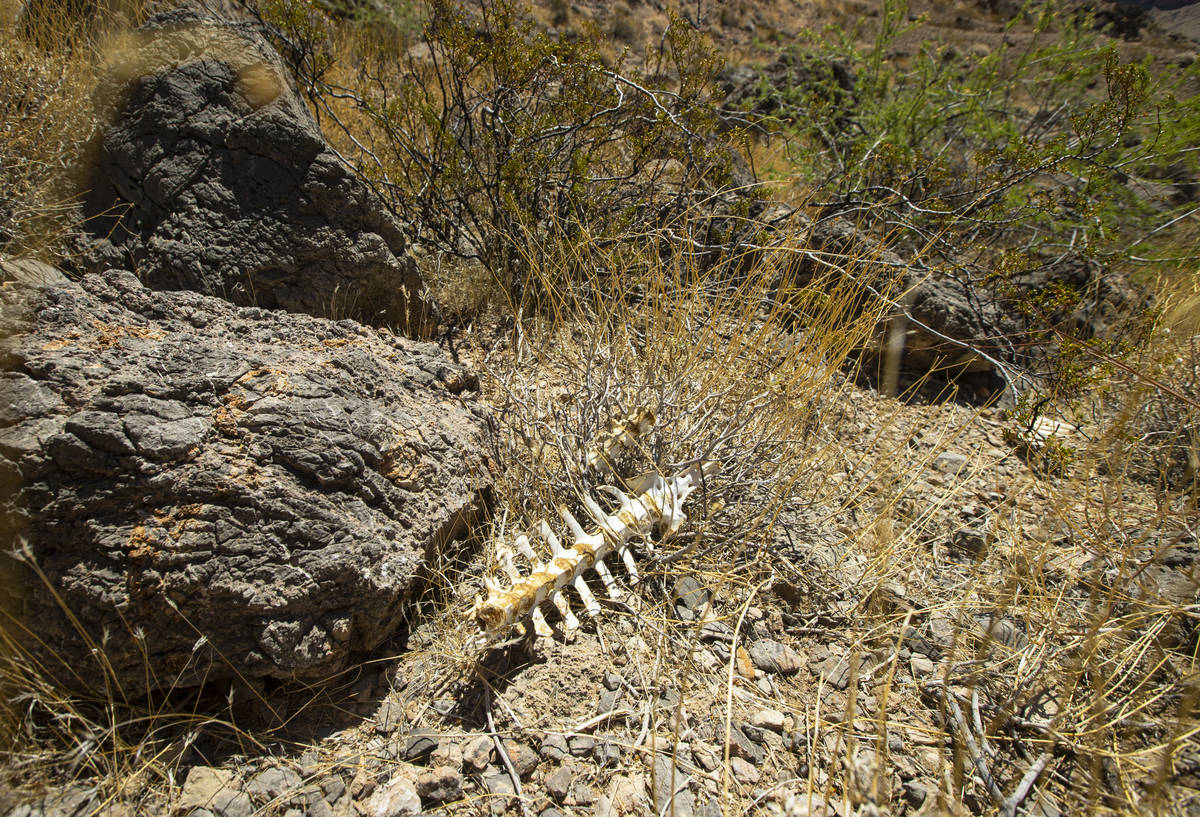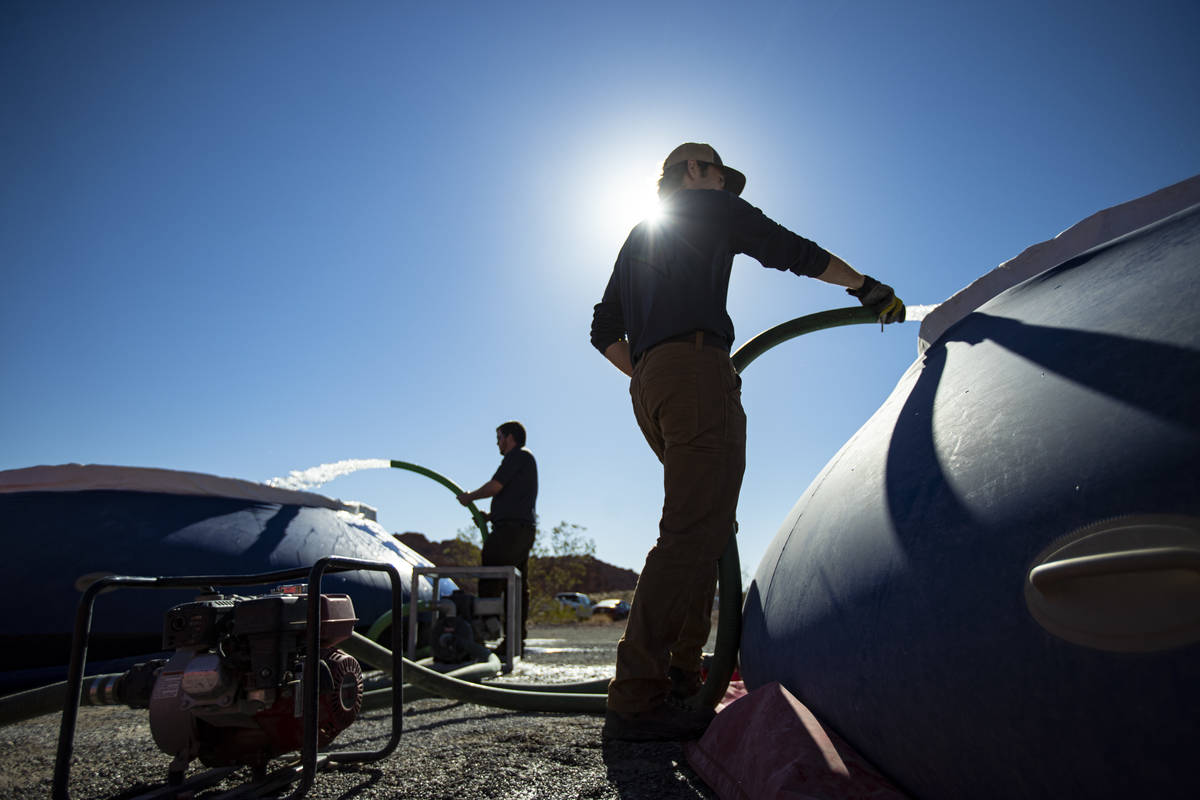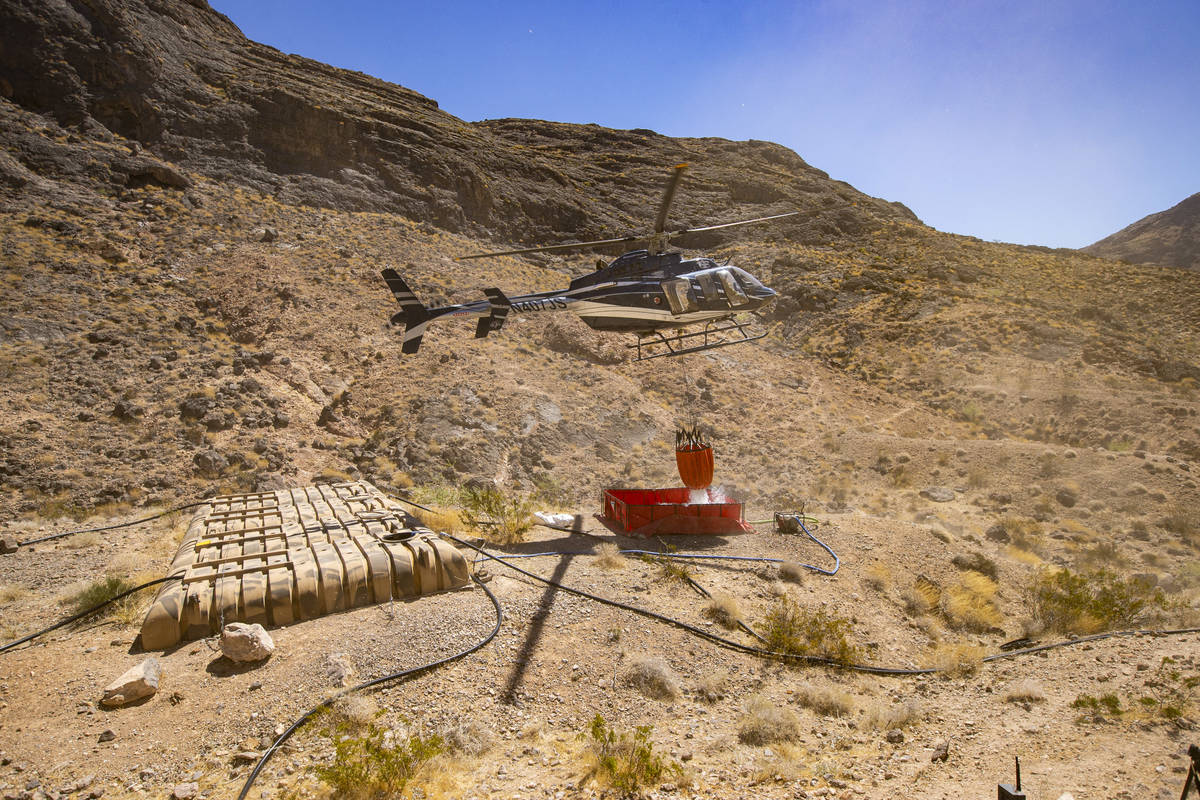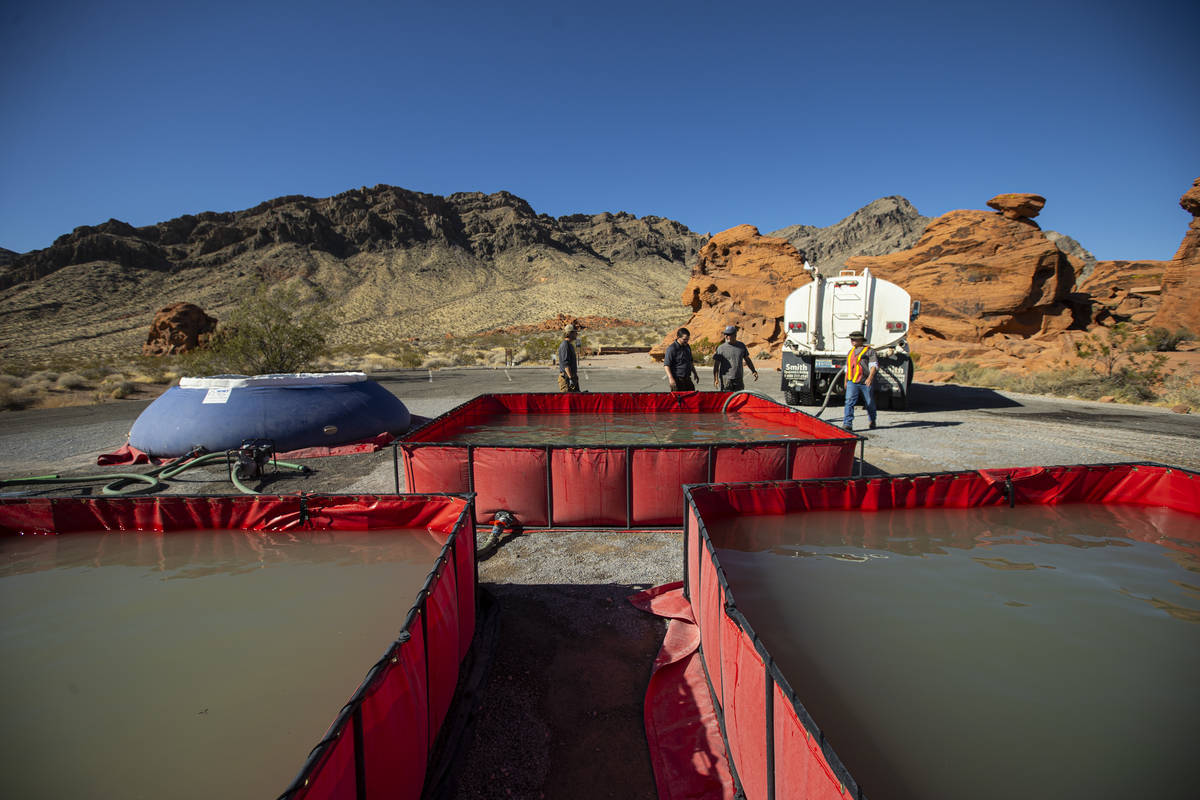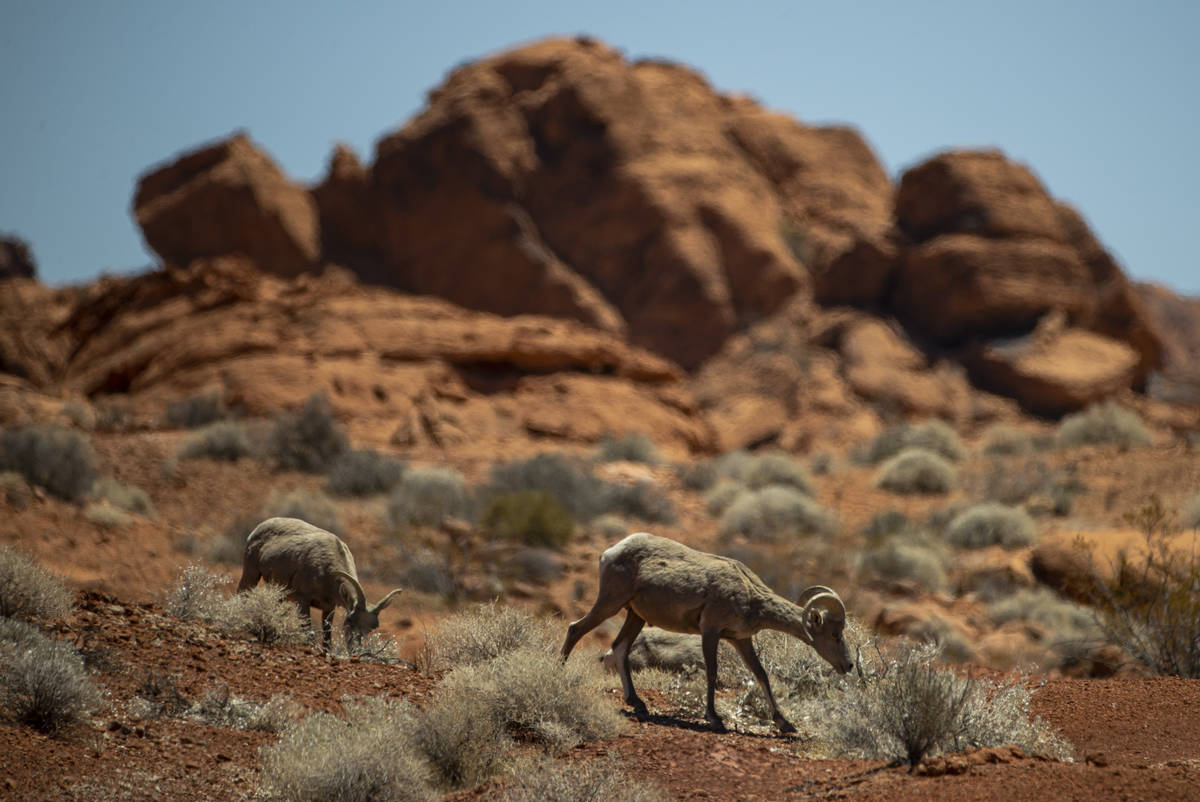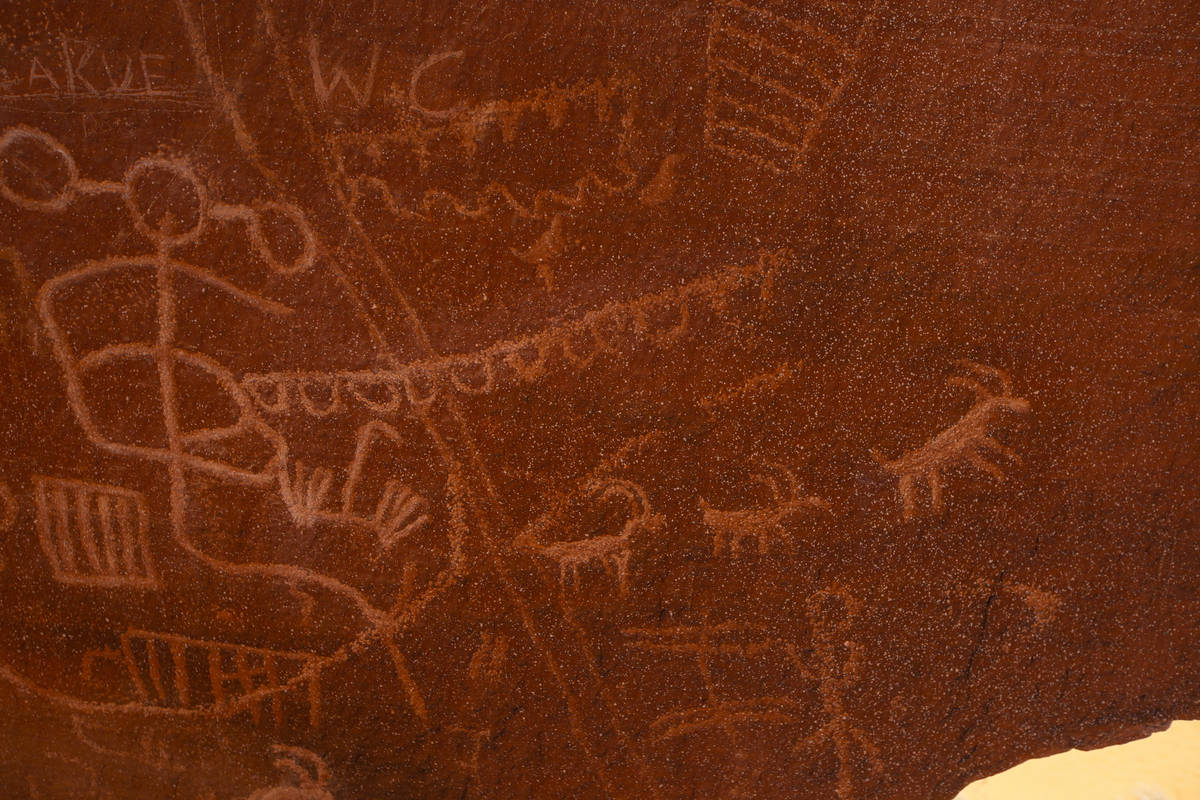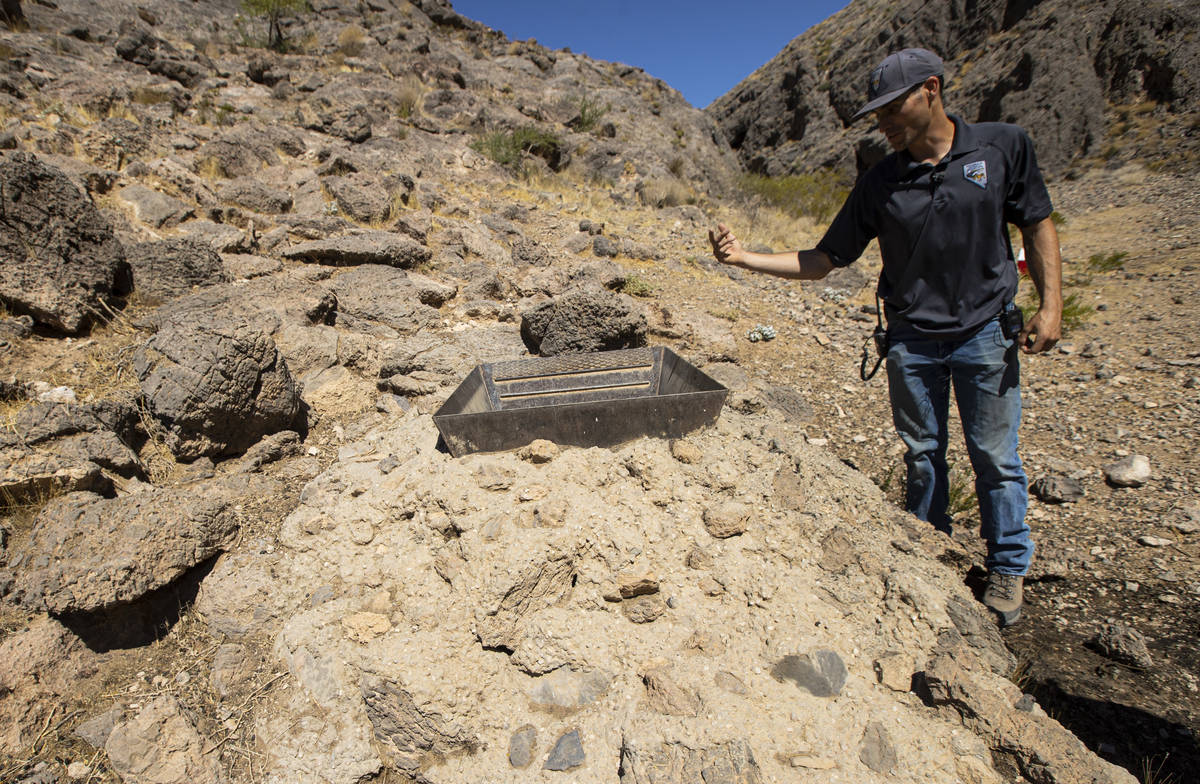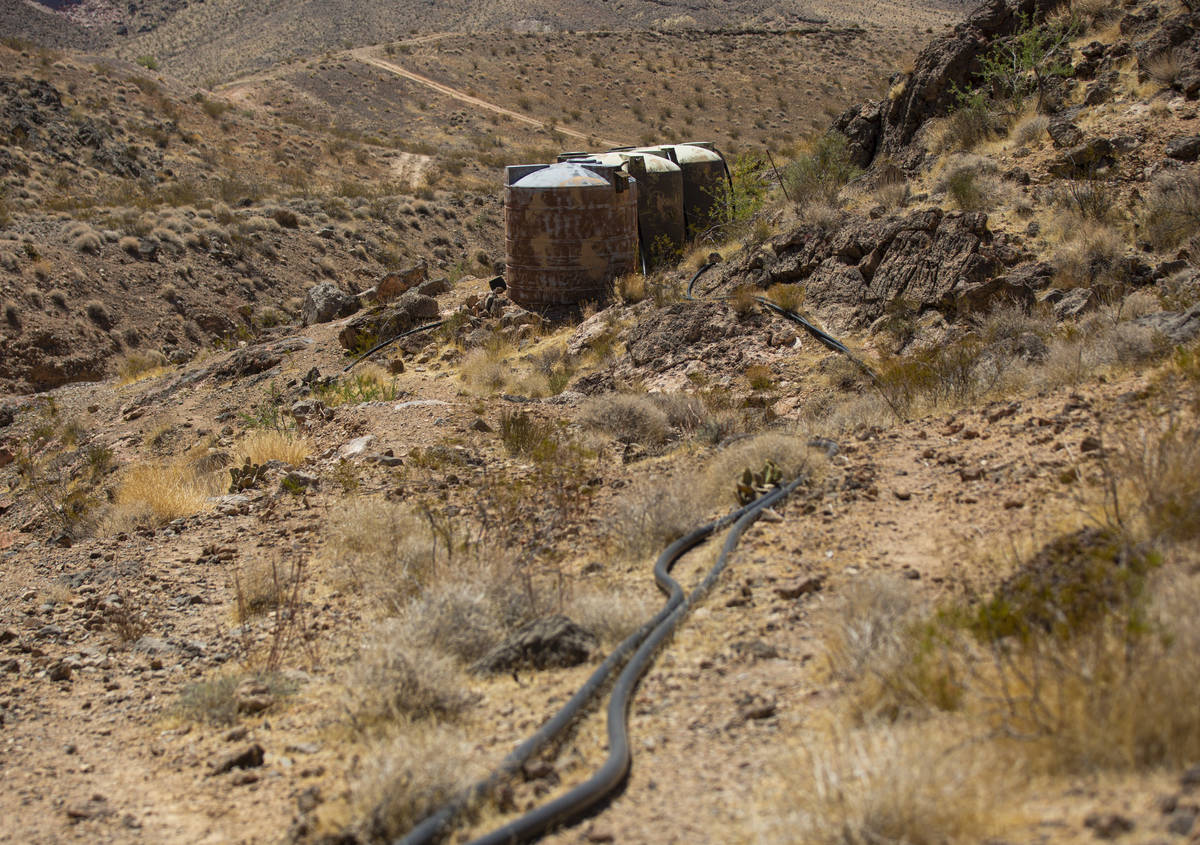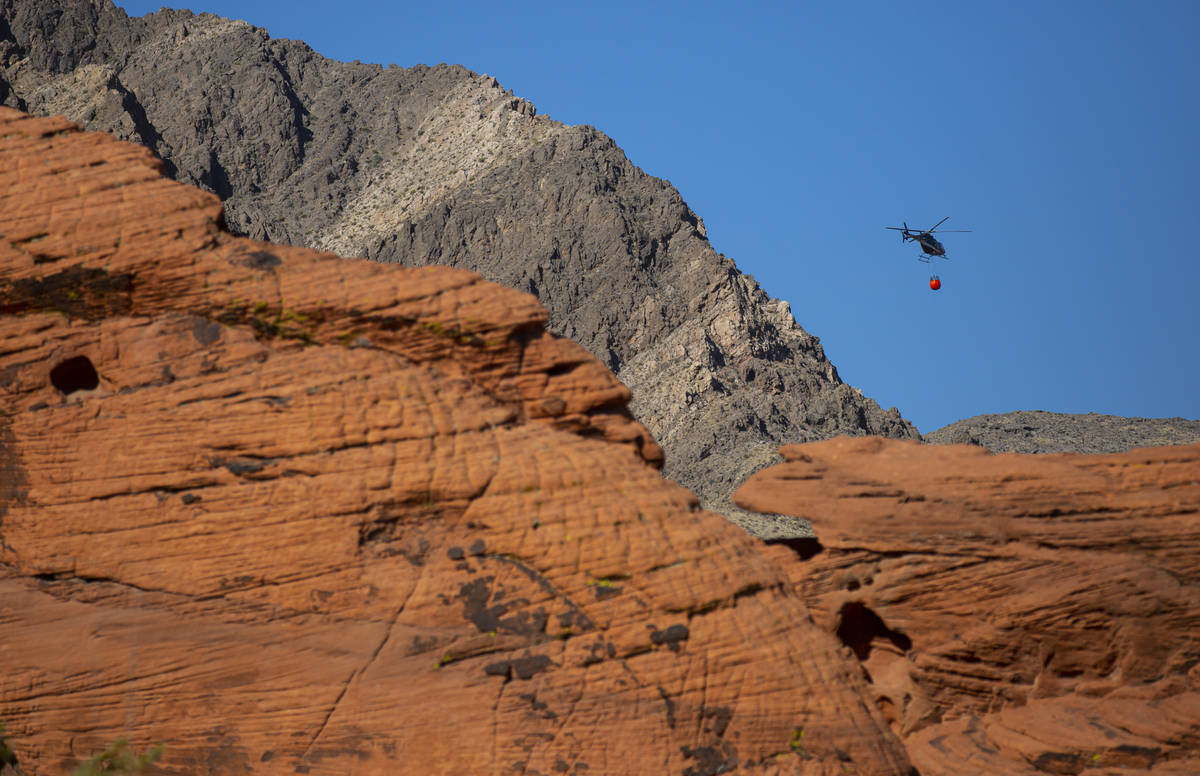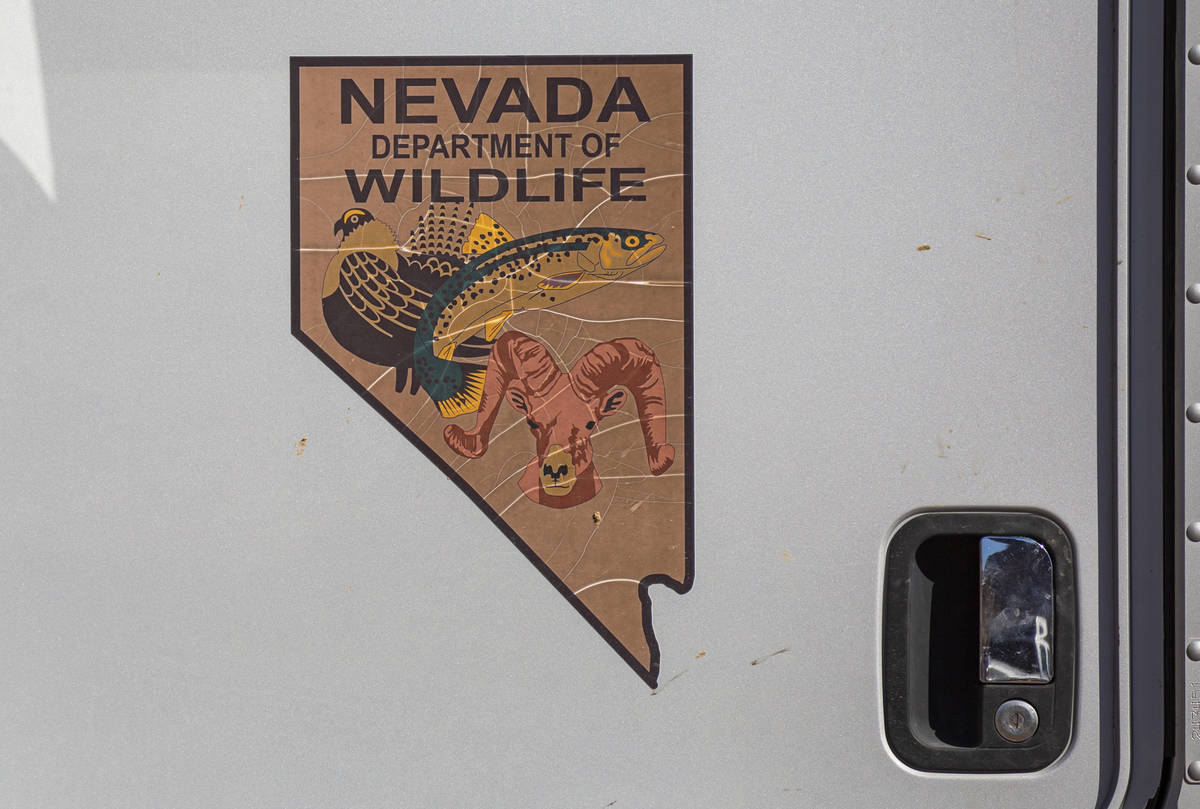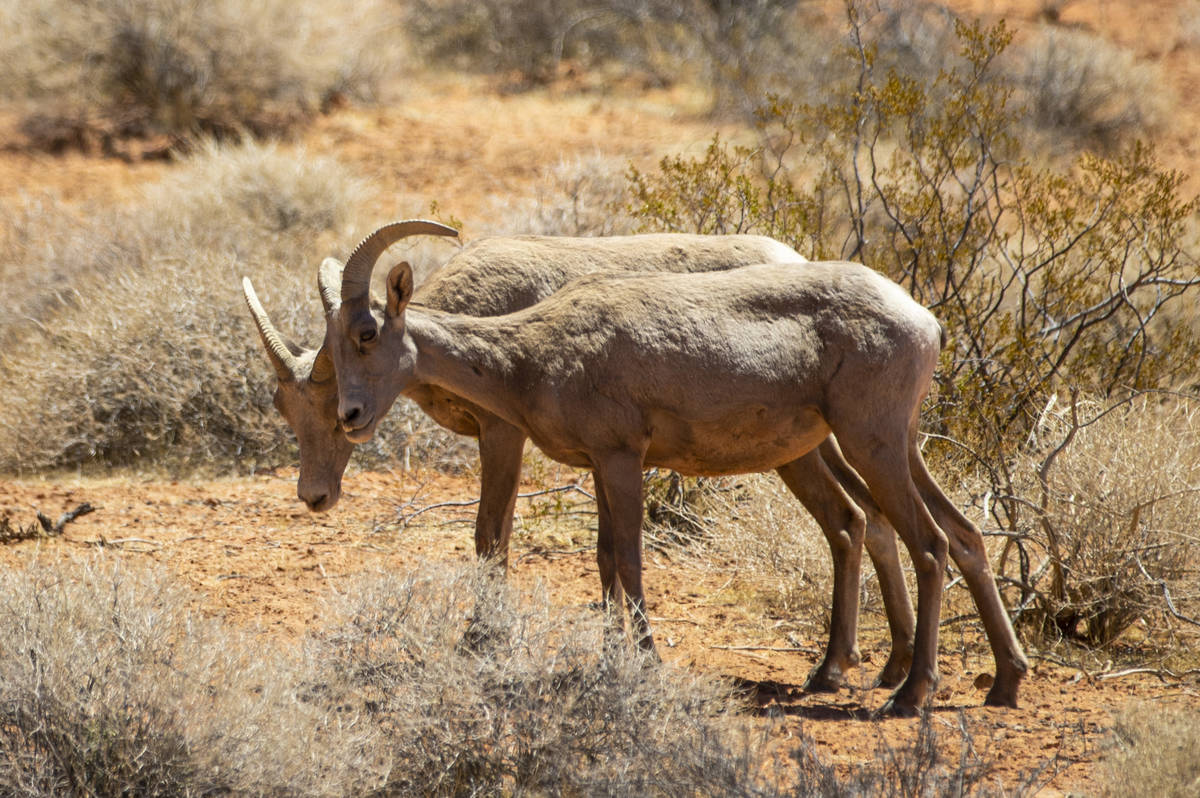‘Beyond rare:’ State drops water for bighorn sheep as drought persists
On the side of a mountain peak in Valley of Fire State Park is a lone wildlife biologist refilling water tanks.
In the background, a helicopter precisely lowers a Bambi bucket that holds about 200 gallons of water into a receptacle and quickly leaves to haul more water. As the helicopter circles back down to the base of the mountain, a six-man crew is refilling five water receptacles for the next water draw.
“That’s about a six-minute turnaround,” said Wildlife Game Biologist Pat Cummings. It was the helicopter’s 20th trip of the day.
The Nevada Department of Wildlife is replenishing desert bighorn sheep’s only source of water for miles. Without the emergency intervention, animal populations will decline and ecosystem viability is threatened.
“We’ve had drought conditions before. We have had to haul water on an emergency basis, but not anywhere near approaching this magnitude, this scale of severity,” Cummings said. “I have been in Southern Nevada since the mid-’70s. I remember 2001 and 2002 as being the worst, back-to-back dry years, even worse than 1996. But what we see now is even worse, even worse.”
Nevada is experiencing intense drought for the second year in a row. Last year, Las Vegas went 240 days without measurable rainfall. This year, 40 percent of the state is in exceptional drought — the highest level of drought according to the National Weather Service.
Cummings said water developments, also known as guzzlers, have become perilously low in water storage across Southern Nevada.
“All animals, especially bighorn sheep, which have evolved to coexist with the desert environment, rely a lot on the vegetation for water,” said Southern Region game supervisor Joe Bennett.
“When water falls in the Mojave Desert, from that winter-to-early-spring time frame, you’ll typically see a green-up or green flush in response,” he said. “It is that year’s vegetative growth on shrubs, annual grasses, or even perennial grasses, which means they grow multiple years, that will allow sheep in the cooler temperatures of the winter months in early spring to move off these water sources and get a lot of water from the vegetation.”
However, during intense drought seasons, vegetation dries up earlier in the season. Finding no moisture in the vegetation forces sheep to rely more on artificial water sources.
As a result, sheep begin to seek water from guzzlers earlier in the year. Desert bighorn sheep are not the only animals dependent on artificial water sources; wild burros, the valley pocket gopher, the Merriam’s kangaroo rat, the kit fox, the red-tailed hawk, the rock wren and Phainopepla depend on the guzzlers, too.
It’s the second year in a row for the water hauls, which one department spokesman called “beyond rare.”
How guzzlers work
Guzzlers have been in use since the 1980s and perfected over the years.
Using a powerful utility helicopter, the state wildlife department is hauling water at a rate of about 3,000 gallons an hour to remote water developments across Southern Nevada’s mountain range. These remote developments, typically at the tops of the mountains, house a guzzler: a manufactured device designed to collect and store rainwater (and snow) in large tanks. The water is made available from the tanks to wildlife through pipes that feed into a trough-like drinker system, typically at the base of the mountain.
Last year, with help from non-governmental organizations, the state wildlife department hauled more than 167,000 gallons to 30 water developments. This year, it plans to haul approximately 55,000 gallons to 12 guzzlers in Southern Nevada.
With drought persisting in the desert Southwest for five months now, it might not be the department’s only time refilling the guzzlers.
“We’re in the grips of the La Niña weather pattern,” Cummings said.
Strong winds blow the warm water at the surface of the Pacific Ocean from the West Coast of North America toward Asia. This weather pattern pushes rain up toward the Pacific Northwest and Canada, leaving the southern U.S. in a state of drought.
The prospects of rainfall in the near future do not look promising.
According to the National Weather Service, Nevada will continue to see severe drought conditions through July. The wildlife department is hoping to see the La Niña weather pattern shift to an El Niño pattern, in which warm water is pushed back to the west coast of the Americas. This shift in weather patterns brings about monsoons that the department depends on to refill the guzzlers. If monsoons do not happen by August, that means no major water collection for the rest of the year.
Over the years, the state wildlife department learned that it could vastly improve collection efficiency by switching to a metal apron. After multiple iterations of upgrades, most guzzlers now incorporate a 40-by-80-foot metal collection system designed to slowly distribute water down to the drinker. The entire water development is a self-leveled system. In other words, if the drinker is down, say by 10 inches, the guzzler is also down by 10 inches. This allows for a quick survey of the water during an annual maintenance flight in February.
“We get the preponderance of our rainfall in the Mojave Desert from November through March. It’s in those storms that a 40-by-80-foot apron will fully recharge, say a 6,900 or nearly a 7,000-gallon project or something even a little bit more,” Cummings said. “It is by virtue of being in the Mojave Desert we don’t get much precipitation here. In the lower Colorado River Mountain Range, we’re probably going to get somewhere between 4.5 (and) maybe 6 inches (of rainfall) in an average year. But the majority of those years in that 10-year span are below average. And right now, we’re in our second severe drought system.”
Bighorn prediction
What does this weather prediction mean for native desert bighorn sheep?
The Muddy Mountain and Black Mountain population of desert bighorn in Southern Nevada is the largest subpopulation in Nevada. The population of the regional desert bighorn sheep is estimated to be around 900. Numbers have reached over 1,000 in the recent past but have contracted largely because of drought conditions.
“The desert bighorn population is a tremendously awesome resource in Nevada. It is our state animal,” Cummings said. “In the 1960s, we had about 2,000, to 2,500 desert bighorns remaining in subpopulations in Southern Nevada and a few in central Nevada. Non-government organizations were the muscle units, the agent of change, that worked with the Department of Wildlife and began an aggressive program to trap and to repatriate bighorn sheep throughout historic mountain ranges in Nevada.” With their efforts, the bighorn sheep population has reached 12,000 sheep statewide.
In a lot of cases, if there’s not a conservation organization or steady funding mechanism in place, it’s hard to get wildlife removed from the landscape back on the map.
“We’d like to keep common species common. We want it to be as natural as we can make it and just let things persist in a natural state. If you have these bighorn sheep populations become extinct, then it may not be feasible to get them back on the landscape,” Bennett said.
Stephanie Castillo is a 2021 Mass Media reporting fellow through the American Association for the Advancement of Science. Email her at scastillo@reviewjournal.com or follow her on Twitter @PhutureDoctors.


